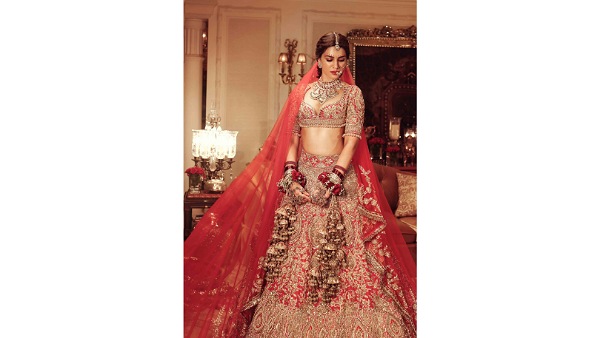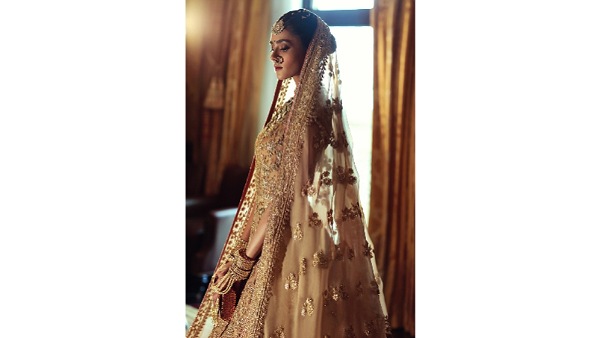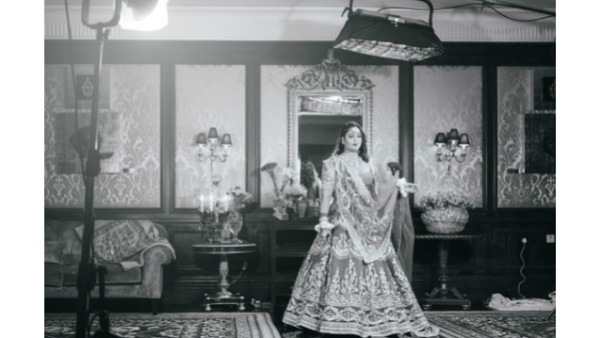Just In
- 8 hrs ago

- 9 hrs ago

- 12 hrs ago

- 12 hrs ago

Don't Miss
- Movies
 Nayanthara's Remuneration Touches New High; Becomes First South Actress To Charge Rs 10 Crore & Here's Why...
Nayanthara's Remuneration Touches New High; Becomes First South Actress To Charge Rs 10 Crore & Here's Why... - Finance
 1:10 Split, Rs 51 Dividend: Accumulate Tata Stock, TP Rs 170; Big Update On £1.25 Bn Investment
1:10 Split, Rs 51 Dividend: Accumulate Tata Stock, TP Rs 170; Big Update On £1.25 Bn Investment - News
 Harvey Weinstein's Conviction Overturned, Netizens Angered Over Elite Privilege
Harvey Weinstein's Conviction Overturned, Netizens Angered Over Elite Privilege - Sports
 T20 World Cup 2024: Waqar Younis Predicts Pakistan's 15-Man Squad; Drops This Express Pacer
T20 World Cup 2024: Waqar Younis Predicts Pakistan's 15-Man Squad; Drops This Express Pacer - Automobiles
 Royal Enfield Unveils Revolutionary Rentals & Tours Service: Check Out All Details Here
Royal Enfield Unveils Revolutionary Rentals & Tours Service: Check Out All Details Here - Technology
 Elon Musk’s X Is Launching a TV App Similar to YouTube for Watching Videos
Elon Musk’s X Is Launching a TV App Similar to YouTube for Watching Videos - Education
 AICTE introduces career portal for 3 million students, offering fully-sponsored trip to Silicon Valley
AICTE introduces career portal for 3 million students, offering fully-sponsored trip to Silicon Valley - Travel
 Escape to Kalimpong, Gangtok, and Darjeeling with IRCTC's Tour Package; Check Itinerary
Escape to Kalimpong, Gangtok, and Darjeeling with IRCTC's Tour Package; Check Itinerary
ICW 2021: Conventional And Unconventional Thoughts Inspired By Manish Malhotra’s Nooraniyat Collection

Founder of the sustainable loungewear brand Nindia Loungewear, Sanjana Rishi wore a teal-blue pantsuit to her wedding. She paired her unorthodox wedding attire with jewel-toned blue juttis, minimal jewellery, and subtle-embroidered knee-length veil. Her wedding outfit became the talk of the social media for she broke the conventions. The style statement was undoubtedly fuss-free and unique. If you thought bridal dreams are made of lehengas and sarees, Sanjana Rishi beckoned you to think beyond the usual.
While the netizens admired Sanjana for her bridal outfit, a number of prospective brides would want to stick to the conventions and dress up resplendently for their weddings. Given the conditioning, roots, and narratives, sarees and lehengas are what most brides want. Of course, India has diverse bridal couture depending on the region but here because the conversation is going to be about Manish Malhotra's latest collection, let's stick to the northern region wedding-wear.
At the FDCI India Couture Week 2021, the designer presented his Nooraniyat - The Bridal edit on a slightly over 5-minutes digital format. Manish Malhotra's muse was actress Kriti Sanon. The setting was opulent at The Leela Palace Delhi, capturing the spirit of high-end Indian weddings but the digital movie showed those unfiltered moments of the brides, so vividly. As a storyteller, Manish Malhotra documented the different moods of the bride - the movie was about those inexplicable and unshared emotions that stays with the bride.

The humble presentation was heartwarming but the collection was quite evidently dictated by conventions and somewhere seemed more like a dialogue of the designer on bridal couture.
The outfits, on the other hand, exuded familiarity because of the traditional red hue and intricate zardozi, badla, beaded motifs, and fringe detailing. This didn't seem like the collection that was about moving notches ahead but about reflecting and realising the bridal couture heritage and reliving nostalgia - even the song 'Gur Nalo Ishq Mitha' in the backdrop inspired us to think about those good old days. In the world of sustainable yet fast-changing narratives, Manish Malhotra's heavy outfits were so presented that the whole effect of the movie made you want to slow down and breath.
Apart from red, peach, green, beige, and soft golden hued outfits were also a part of the collection. There was a whiff of modern minimal to the collection too with some outfits such as the beige saree but in a nutshell, the theme was maximalist and the question comes to mind is that whether in today's time, the brides still want to opt for a heavy outfit with elaborate jewellery?

The times are changing and most brides might want to sport the traditional heavy look, following the solah shringar convention, given the romanticization of elaborate style in Indian weddings. But this whole narrative of 'looking your best' on the wedding day can weigh heavily on the prospective bride - when has the bride ever felt relaxed on her wedding day?
If you keep bridegrooms in perspective, their outfits including sherwanis and western suits, even if intricately done, allow them the freedom of movement but the brides, on the other hand, look all decked up from head to toe, and are expected to show grace and elegance in their heavyweight outfits. Now, it's completely the choice of the brides wanting to follow the legacy and preserving the heritage but somewhere, the idea of ornamental outfits for brides seems enforced and here not talking about the privileged sections alone, who have more choices but the masses, who follow conventions religiously. The aspirational middle and upper-middle class might not be able to afford outfits by the top designers like Manish Malhotra, Sabyasachi, and more but they do want to ace or copy the look created by the very designers - the narrative of dressing resplendent stays sold!
So, the bride, who wants to opt for comfortable clothes on her wedding, isn't comfortable enough to opt for those outfits that can help her perform saat pheras, sans the restriction of movements. It is an uncomfortable thought for a bride willing to experiment with lightweight outfits for she is fed with the age-old bridal dreams; has to take care of the perception of society; so, the freedom is compromised when the brides want to take a road less travelled.

If Sanjana Rishi was appreciated, she was trolled too for not looking like 'Indian bahu' by the so-called moral-code preservers for not following the orthodox route, instead of admiring her for the liberating step she took. You saw Kriti Sanon and models in the movie looking gorgeous but the idea of heavy chokers, detailed hathphools, layers of kaleeras, and other elaborate jewellery stays embedded - when is the bridal couture ever about skirts and pants too, or whatever bride and bridegroom, and guests are willing to wear.
Designers and cinema in India have the power of changing and broadening narratives to include various style of outfits, but why have we as a country haven't been pluralistic about wedding wear - which is a considerable-sized market in India. If rituals in Indian weddings are patriarchal enough, the heavy costumes also symbolize patriarchy - for a bride dressed in heavy couture is supposed to look like a porcelain doll, where guests come and compliment her but heavens forbid, when the times comes for her to enjoy the delectable wedding meal and the sweat beads trickling down her face, when she is sitting on the mandap with the sacred fire in the middle, inviting Agni - the Fire God.

The point is that be it heavy costumes or unorthodox wear - it should be the choice of a bride but having space for just a specific style sensibility for weddings is as restrictive as clothes itself. Manish Malhotra's collection is a perfect choice for ladies, who prefer maximalist outfits and stay rooted but not quite for women looking forward to breaking the conventions. Also, adding to that, while Manish Malhotra showed inclusivity in terms of age, body positivity, and broadening the scope of region but the inclusivity can also come in terms of outfits - where a designer (and not just Manish Malhotra) shows diversity by including traditional wear but also slowly introducing the idea of understated traditional outfits, bride wearing pants, short veils, and dresses to a wedding.
Production:
Manish
Malhotra
Productions
(@manishmalhotraworld
)
Jewellery:
Manish
Malhotra
Jewellery
(
@manishmalhotrajewellery
)
Curated
Line
with
@raniwala1881
Beauty:
@manishmalhotrabeauty
Photography:
@victoriakrundysheva
Location:
The
Leela
Palace
Delhi
@theleelapalacenewdelhi
@theleela
Model
Management:
@pujankapursharma
Hair
&
Makeup:
@danielcbauer
@danielbaueracademy
@fdciofficial
-
 fashionRanveer Singh-Kriti Sanon Dazzle In Manish Malhotra Banarasi Weave Outfits In Kashi, Watch Video!
fashionRanveer Singh-Kriti Sanon Dazzle In Manish Malhotra Banarasi Weave Outfits In Kashi, Watch Video! -
 fashionIsha Ambani's Fashion Journey At Anant-Radhika's Pre-Wedding, Outfit By Outfit!
fashionIsha Ambani's Fashion Journey At Anant-Radhika's Pre-Wedding, Outfit By Outfit! -
 fashionSaree With Pants: Manish Malhotra Designs Culturally Rooted Modern Uniforms For Air India Staff, Pics!
fashionSaree With Pants: Manish Malhotra Designs Culturally Rooted Modern Uniforms For Air India Staff, Pics! -
 fashionManish Malhotra Diwali Bash 2023: Kiara, Sidharth, Aishwarya, Salman And Others Flaunt Impressive Ethnic Fash
fashionManish Malhotra Diwali Bash 2023: Kiara, Sidharth, Aishwarya, Salman And Others Flaunt Impressive Ethnic Fash -
 fashionRekha's Age Defying Looks For Vogue Arabia Photoshoot Is A Lesson In Beauty And Elegance, Pics!
fashionRekha's Age Defying Looks For Vogue Arabia Photoshoot Is A Lesson In Beauty And Elegance, Pics! -
 home n gardenGauri Khan Designs Stunning Home For Manish Malhotra, Pics!
home n gardenGauri Khan Designs Stunning Home For Manish Malhotra, Pics! -
 fashion trendsLFW 2023: Sustainability And Modern-Classic Blend Rule The Menswear Collection
fashion trendsLFW 2023: Sustainability And Modern-Classic Blend Rule The Menswear Collection -
 fashion trendsLFW 2023: Ananya Panday And Aditya Roy Kapur Walk The Ramp For Manish Malhotra
fashion trendsLFW 2023: Ananya Panday And Aditya Roy Kapur Walk The Ramp For Manish Malhotra -
 bollywood wardrobeKiara Advani’s Golden Lehenga For Her Sangeet Ceremony Is Blingy And Beautiful, Pics!
bollywood wardrobeKiara Advani’s Golden Lehenga For Her Sangeet Ceremony Is Blingy And Beautiful, Pics! -
 bollywood wardrobeKatrina Kaif, Kriti Sanon, Aishwarya Rai, Madhuri Dixit, Suhana Khan Shine At Manish Malhotra's Diwali Bash
bollywood wardrobeKatrina Kaif, Kriti Sanon, Aishwarya Rai, Madhuri Dixit, Suhana Khan Shine At Manish Malhotra's Diwali Bash -
 bollywood wardrobeJanhvi Kapoor Exudes Vintage Vibes With Her Exquisite Saree, Stunning Makeup, And On-Point Hairdo
bollywood wardrobeJanhvi Kapoor Exudes Vintage Vibes With Her Exquisite Saree, Stunning Makeup, And On-Point Hairdo -
 bollywood wardrobeKareena Kapoor Khan And Karisma Kapoor Prove Black Is The Ultimate Party Hue With Their Dresses
bollywood wardrobeKareena Kapoor Khan And Karisma Kapoor Prove Black Is The Ultimate Party Hue With Their Dresses


 Click it and Unblock the Notifications
Click it and Unblock the Notifications



